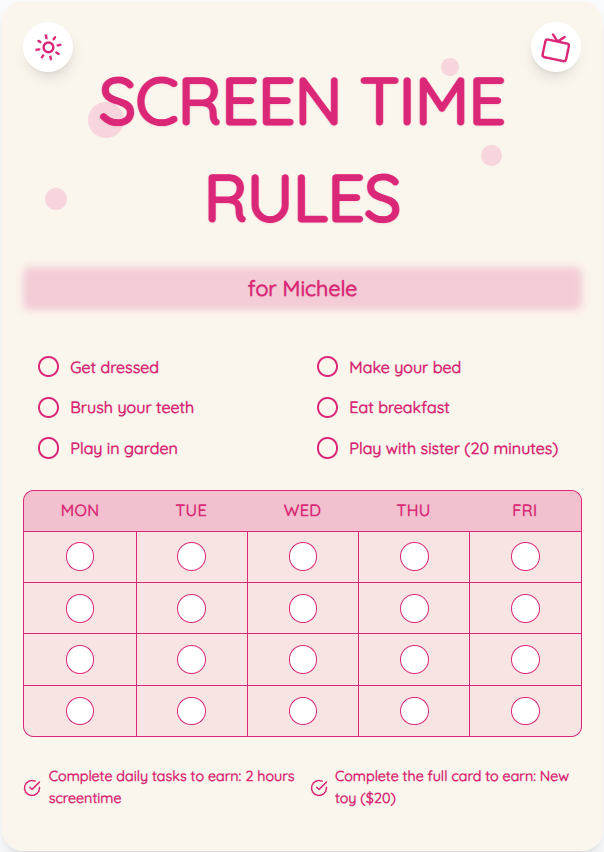Is Screen Time Limit Good or Bad? What Parents Need to Know
As a parent, you may wonder whether setting screen time limits is beneficial or harmful to your child's development. In this comprehensive guide, we explore the effects of screen time limits and provide actionable advice for managing screen time effectively for children aged 2-12.
See What Your Screen Time Chart Will Look Like
Here's an example of a beautiful, customizable screen time rules chart you can create for your family

The Benefits of Setting Screen Time Limits
Setting screen time limits can have numerous benefits for children. It helps in regulating their exposure to screens, promotes healthier habits, improves sleep quality, enhances social interactions, and fosters creativity. By limiting screen time, children have more opportunities for physical activity, face-to-face communication, and hands-on learning experiences.
The Drawbacks of Excessive Screen Time
On the flip side, excessive screen time can lead to various negative impacts on children's development. It may result in decreased attention span, poor academic performance, disrupted sleep patterns, behavioral issues, and potential risks of obesity. Overuse of screens can also hinder social skills development and limit real-world experiences crucial for holistic growth.
Put These Tips Into Action
Create a custom chart to implement these strategies with your child
Effective Strategies for Managing Screen Time
To strike a balance, consider implementing practical strategies to manage your child's screen time effectively. Create a screen time schedule, encourage outdoor activities, engage in joint screen time activities, establish tech-free zones at home, and lead by example in limiting your own screen time. Utilizing screen time charts can help visualize and regulate your child's daily screen usage.
Practical Tips for Success
- Create a consistent daily screen time schedule for your child.
- Encourage a variety of offline activities to reduce screen dependency.
- Engage in co-viewing or co-playing when your child is using screens.
- Designate specific tech-free zones in your home.
Frequently Asked Questions
How many hours of screen time are recommended for children?
The American Academy of Pediatrics recommends no more than one hour of high-quality screen time per day for children aged 2-5. For children aged 6 and older, consistent limits on screen time are advised based on individual needs and activities.
Can screen time limits impact my child's academic performance?
Excessive screen time can negatively impact academic performance by reducing time spent on homework, reading, and other educational activities. Setting reasonable screen time limits can help prioritize academics and overall well-being.
How can I motivate my child to adhere to screen time limits?
Incorporate rewards for following screen time limits, involve children in creating the screen time schedule, offer alternative activities, and establish clear consequences for exceeding limits. Consistent communication and positive reinforcement can encourage compliance.
By understanding the balance between the benefits and drawbacks of screen time limits, parents can make informed decisions to promote their child's healthy development. Implementing practical strategies and utilizing tools like screen time charts can help create a harmonious tech environment at home. Take the first step towards fostering a balanced approach to screen time management today!
Ready to Transform Your Family's Screen Time?
Join thousands of parents who have successfully managed screen time with our customizable charts.
